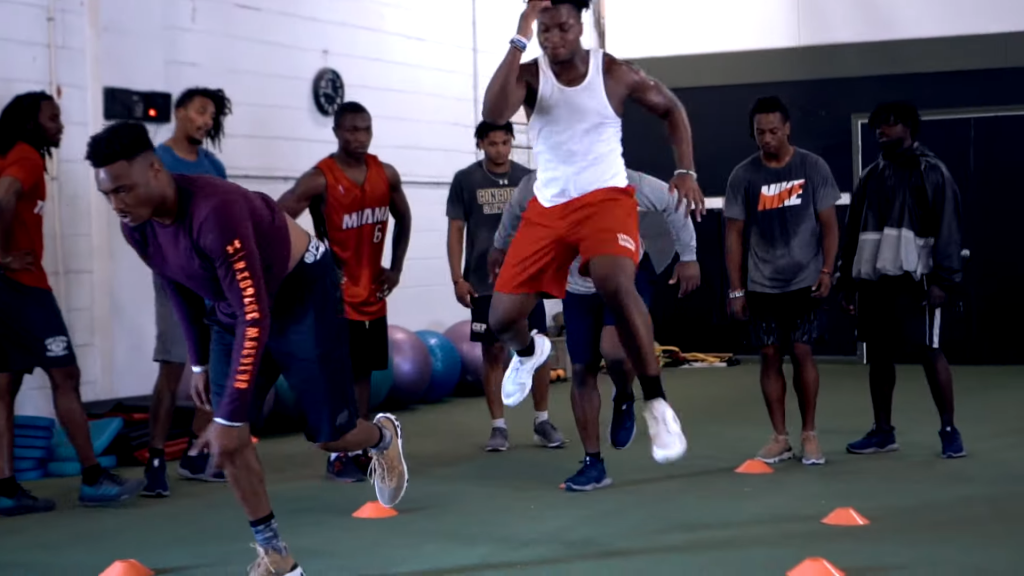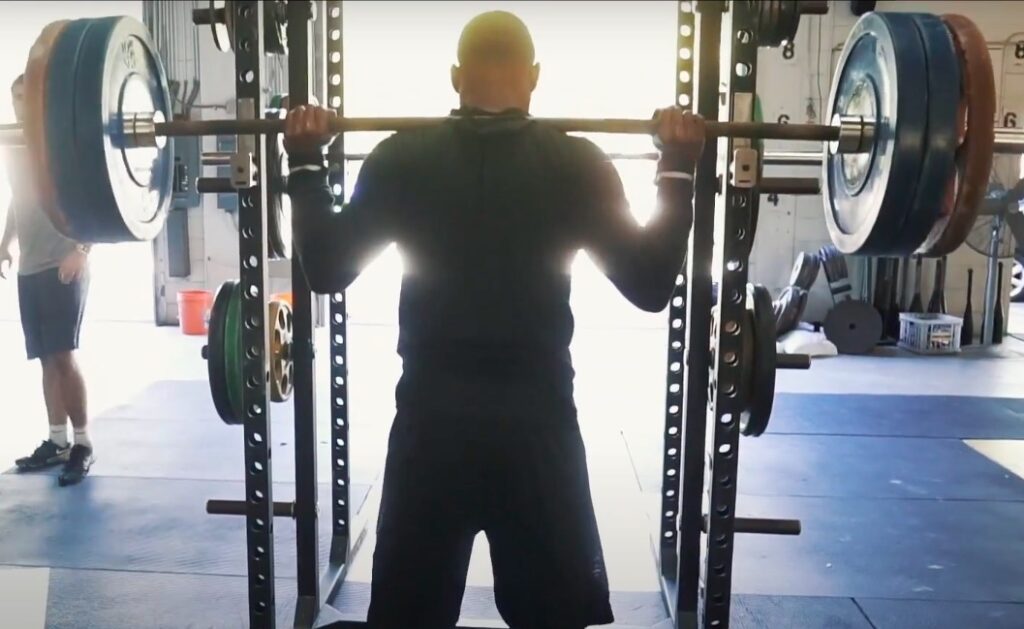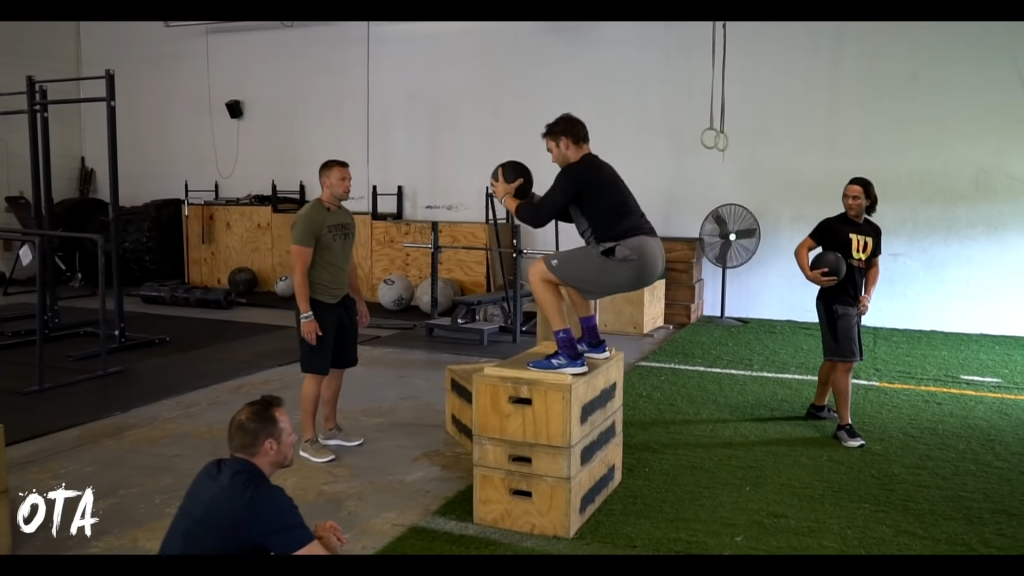It’s always a pleasure to share information from other coaches’ input and experience. Ryan Romano is the owner and head coach of The Underground Performance Institute.
There, Ryan specializes in using strength and conditioning to build confidence and elevate performance in youth athletes.
Today he’s going to be introducing a topic that is becoming more and more timely in the sports world.
Let’s get into it:

At the Underground Performance Institute, we’re all about bringing the most out of an athlete, but over all the years you spend training and competing you’re bound to experience some lows.
For just a moment, I want you to think back on your athletic career and remember some of your biggest setbacks.
Is it losing a big game or maybe missing the final shot? What about missing out on the college offer you’d dreamed of?
Each of these memories will bring you different levels of pain and heartache…
Most of these missed opportunities are the result of an injury. In youth athletes, this will most often be in the knee, shoulder, or ankle.
While some injuries are freak accidents, there’s a lot of them that could be prevented.
The new and upcoming generation of sports, has kids practicing and competing for multiple hours a day which is asking a lot of their joints, and tendons.
Both kids and parents feel the need to start specializing their kids in sports at a much younger age than prior generations. In fact when I grew up it was unheard of for 9-10 year olds to only be participating in only one sport during the year.
Gymnasts, have no choice but to specialize in their sport from a young age.
Finding Balance in Your Training

You might be asking yourself now, who cares? It’s the nature of sports nowadays.
While that might be true to a certain degree, I ask you a follow up question…
What does this cost your child, or your youth athlete?
It’s costing them both their physical and mental health!
Sitting on the sidelines for half the season or missing on on your championship game because your body is too beat up from training, is a crushing emotional experience.
So What’s the Answer?

The answer to this puzzle could be the most important training tool that every coach, athlete, parent and performance trainer should focus on:
Finding a balance between strength and flexibility.
And while stretching doesn’t act as a magic pill and prevention is never the “sexy answer,” as coaches, we know the importance of a good dynamic warm-up and stretch to finish off a workout.
I try to really bring attention to understanding the importance behind a balance of the two.
Consider a week’s worth of football workouts and you’ll notice they typically spend 80% of their training focused on strength rather than things like flexibility or mobility.
I have been in the sports performance industry for nearly a decade and it never fails that 90%+ of football players sustain injuries or lack enough mobility to sit back on their ankles!
Then you have the massive football guys that can bench press 400lbs or hit 225lbs 30 times, but can’t scratch their back because their shoulders are so tight.
What’s the result?
Common football injuries in the shoulder like rotator cuff or torn labrum.
These athletes are extremely strong, powerful and explosive but lack general flexibility. That stiffness is the result of many injuries.
The Other End Of The Spectrum: Gymnastics

Now let’s dive into the athletes who are on the complete opposite end of the spectrum such as gymnastics.
Stop and consider (even if you know little about the sport), that most know that gymnasts are extremely flexible. It’s a critical area of their sport.
Where football athletes practice on the field and spend time in the weight room, gymnasts practice their skills alone, then have a full blown stretching training.
It’s a part of their training every single day.
But why do so many gymnasts get injured or walk around everyday with so many nagging injuries?
The answer is that they lack the appropriate strength training program. While they do some strength work, the vast majority of it consists of body weight training…
And while it’s beneficial to focus so much on flexibility in addition to their training, there’s many young athletes even going through 25+ hours per week.
This takes a major toll on the body.
One coach quoted me in saying “The majority of these girls are basically duck taped together by the time they get to high school.”
As a mentor in the sports performance space my initial thoughts are the there has to be answers to these problems…
Revolutionizing The Youth Sports World

I’m on a mission to change the dynamics in the sports world, especially within gymnastics.
My goal is to exemplify that while typical training methods for the sport are highly effective, they can be costing our athletes their ability to perform for the remainder of their career.
Are youth sports worth the aches and pains in your body for years or maybe even for the rest of your life?
I’ve had the pleasure of interning at Fitness Quest 10 our in San Diego where Drew Brees trains with Todd Durkin.
His training sessions are balanced which allows athletes like Drew to perform over the course of his entire life.
The focus should always be on keeping athletes healthy in order to perform, whether it’s the MS, HS, college or professional level.
You are of no value being injured or trying to perform at a less than optimal performance due to nagging injuries.
Example of Gymnast Strength Training: (Most typically come 2x/week)

Quick Dynamic Warm Up: (They are usually coming straight from practice)
1a. Heavy Hang Pulls 3×5
1b. Single Leg Hip Bridges on MB 3×8/leg
2. Heavy Box Squat: 2×5; 2×3
3. Drop Set of Squats 2×12: Down to a MB. Looking for Speed and Depth.
4. Moderate Trap Bar Deadlifts 4×8
5. Moderate RDLs: 3×10
6. Moderate Bench: 2×8; 2×6
7a. DB Reverse Flys: 3×12
7b. DB Single Arm Rows: 3×6/arm
8a. Light Good Mornings: 3×12
8b. BB Curls 3×12
Transforming Gymnastics

Over the past few years I have had the opportunity to work with gymnasts at the team level as well as individual gymnasts…
The results I’ve seen while training have me more motivated to get louder on the importance of strength training for gymnasts at all levels of performance.
A quick example includes a 14 year old gymnast that came to me right after spraining her ankle in search of something new. This gymnast was a little skeptical, even saying they’re not sure the sport is for them.
During the first week, she was barely able to deadlift 65lbs.
Fast forward several months and she pulls 115lbs for sets of 8, squatting 155lbs for sets of 5, jumping higher than ever in her career.
In her own words…”I began strength training at UPI, doing this has helped me out tremendously at practice and with my confidence…I can now do things I never thought I would be able to accomplish…and get out of my comfort zone.”
Coaching Takeaway

You would not want to come and strength train in addition to everything else you were doing unless there was some sort of takeaway or a reward.
Evolution is a piece of life and it’s time that we evolve in our sports training across so many sports. Time to think outside the box to help these athletes stay healthy.
That answer lies within the balance of strength training and flexibility. There is no reason that we as coaches must stay entirely on one end of the spectrum.
If you’re a coach take a look at your programs and where can you add more balance into your training.
If you are a parent take inventory of your child’s training routines. This can also have long term effects on your child down the road.
Your body, mind, health and happiness depends on it!
________________
Written by Ryan Romano, Owner and Coach of The Underground Performance Institute
Facebook: Ryan Romano
Instagram: ryromano
LinkedIn: Ryan Romano

1 Response to "The Greatest Training Tool For Every Athlete"
[…] It’s important to understand that newer or younger athletes (those we call untrained), have a much greater potential for improvement since they’re just starting out. If you’ve been putting in work for the past few years, good – keep training. Just because you won’t add another 10 inches onto your vertical doesn’t mean you should avoid putting in the work to reach your full potential. […]